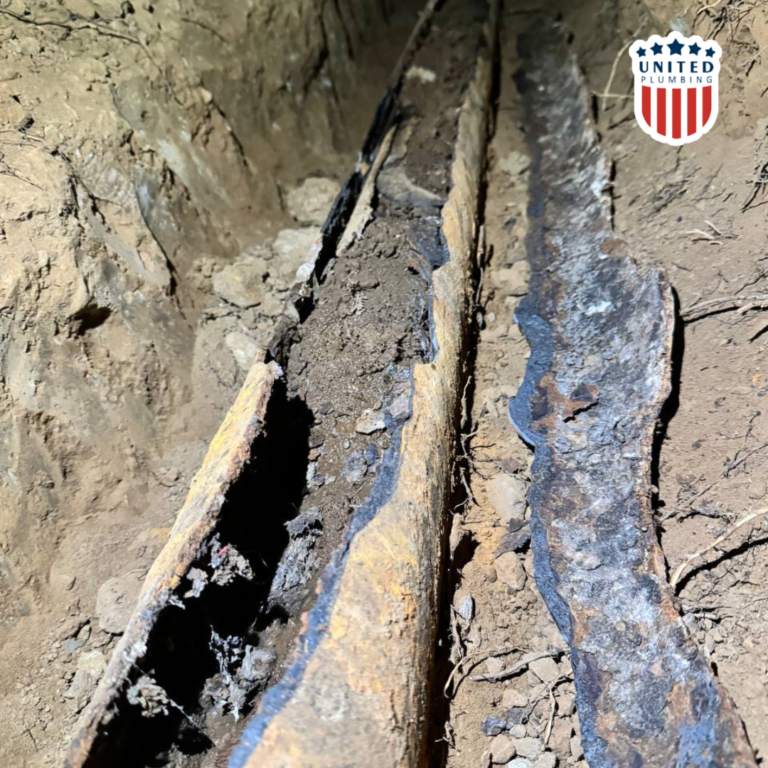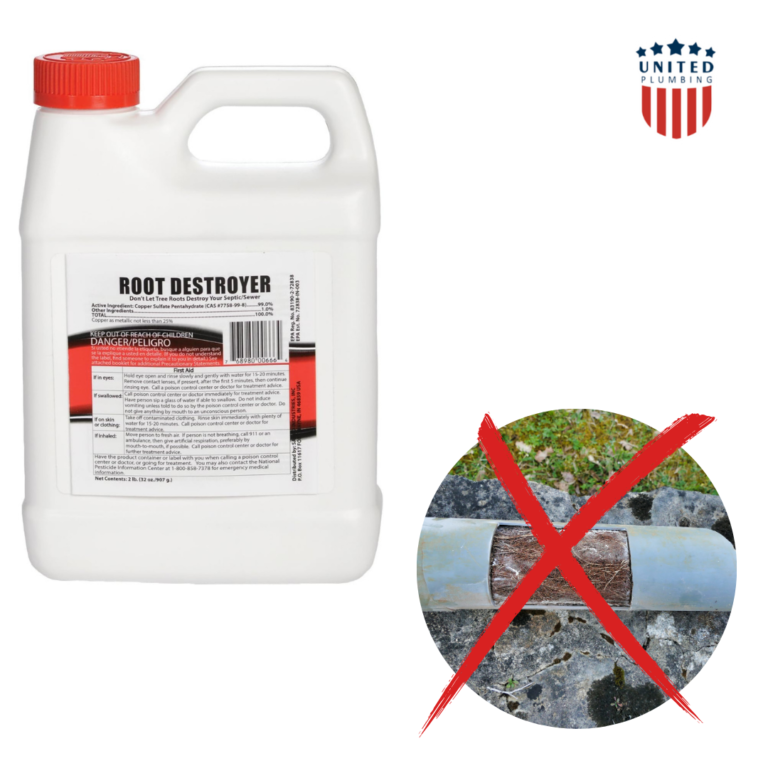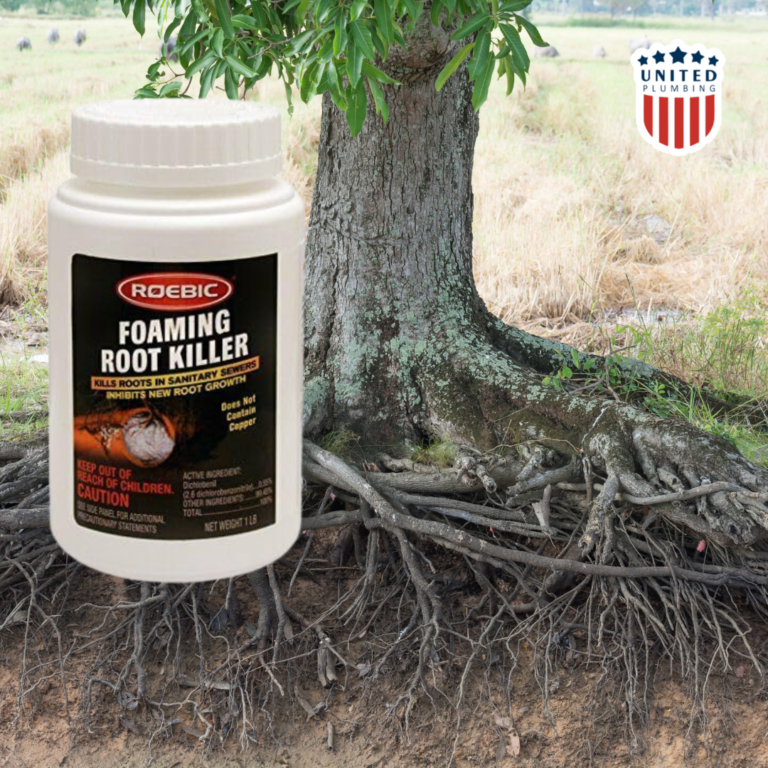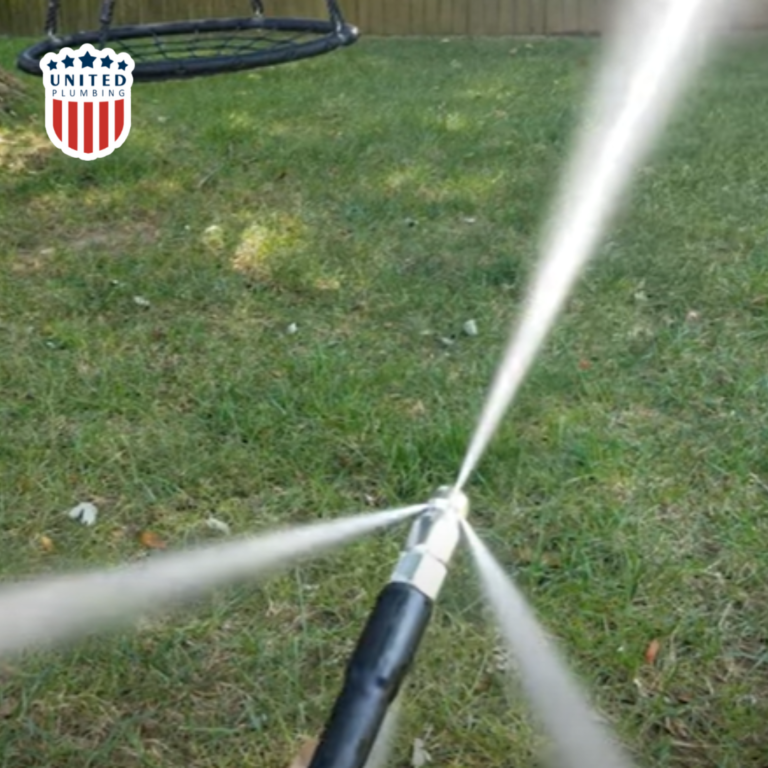FIVE-STAR TEAM WARRANTY &
SAME-DAY SERVICE
Five Ways To Remove Tree Roots In Sewer Line
Tree roots in sewer lines are a common and potentially costly issue for homeowners. Sewer lines often become targets due to the moisture and nutrient-rich environment inside the pipes. When left unchecked, tree roots in sewer lines can cause sewer blockages, lead to sewer backups, and damage your pipes.
What Causes Tree Roots in a Sewer Line?

- Pipe Material and Age: Older pipes, especially clay and Orangeburg pipes, are more susceptible to tree roots in sewer line invasion due to their porous nature and increased likelihood of developing cracks over time. These cracks provide entry points for roots to access the moisture inside the pipes.
- Nearby Trees and bushes: Trees and bushes growing near the sewer line are more likely to extend their roots into the pipes in search of water and nutrients. Certain species, such as willow, maple, and poplar, are known for their aggressive root systems and pose a higher risk to sewer lines.
- Poorly Maintained Pipes: Leaks, cracks, and weak seals in sewer lines provide ideal entry points for roots. A small crack in a pipe can be all it takes for roots to find their way in and start growing, eventually leading to significant blockages.
Signs of Tree Roots in a Sewer Line
Detecting tree roots in a sewer line early can save you from costly repairs. Here are some common signs to watch for:
- Slow Draining or Clogged Pipes: If you notice that drains are emptying slowly, toilet doesn’t flush well, it could be a sign that roots have invaded your sewer line.
- Unpleasant Odors: Roots growing in a sewer line can cause wastewater to stagnate, resulting in foul smells emanating from your drains.
- Frequent Backups: Recurring backups, especially in the lowest drains of your home, can indicate a more serious blockage caused by roots or other obstructions.
- Gurgling Noises: When water and waste struggle to flow through the pipe, you may hear gurgling sounds coming from your drains or toilets.
Ways to Remove Tree Roots in a Sewer Line
Once you’ve identified roots in your sewer line, several methods can help remove them. Each has its pros and cons, so consider the situation and severity of the blockage.
Root Killers and Chemical Treatments: Root killers such as copper sulfate root killer and other specially formulated chemicals can help dissolve tree roots in sewer lines. Copper sulfate works by killing the roots that have entered the pipes, without harming the tree itself. Another popular option is a tree root killer designed for drains, which slowly dissolves roots and prevents regrowth. These treatments are generally a cost-effective solution but may need to be applied periodically for ongoing effectiveness.

Foaming Root Killers: Unlike standard root killers, foaming root killers expand within the pipe, coating the interior and killing roots more effectively. This approach offers the advantage of reaching roots that are higher up in the pipe, providing a more thorough treatment.

Tips: Here we will leave a link where you can buy the necessary chemicals
Professional Solutions for Tree Roots in Sewer Lines
While DIY methods can be useful for small root invasions, professional solutions are often required for severe cases. When it is time to call plumbers near me you will see some of the most effective professional techniques for eliminating tree roots in sewer lines:
Drain Cleaning machine: Plumbers can use specialized drain cleaning machines for drain cleaning.They cut through thick root blockages in sewer lines. Drain cleaning services are excellent for immediate relief from blockages, but they do not address the underlying structural issues in the pipes. This means that roots may grow back if the cracks or leaks are not sealed.

Hydro Jetting: Hydro jetting is another professional solution that uses a high-pressure water jet to remove roots and other obstructions. This method is very effective at clearing even the most stubborn root blockages and does not involve chemicals. However, it should only be performed by a professional to avoid damage to the pipe from excessive pressure.

Tips: The above methods are only temporary solutions to the problem. If the pipe has a crack, it will need to be replaced anyway.
- Pipe Lining and Replacement: In cases of extensive root damage sewer pipe replacement can help. Professional services like pipe lining or pipe bursting may be necessary. Pipe lining involves installing a new pipe within the existing damaged one, creating a sealed barrier that prevents roots from entering. Pipe bursting, on the other hand, involves breaking the old pipe and replacing it entirely. While these options are more invasive and costly, they offer a permanent solution to recurring root problems.
Preventative Measures: Keeping Roots Out of Sewer Lines
Preventing roots from entering sewer lines is the best way to avoid future issues. Here are some preventive tips:
- Plant Trees and bushes Carefully: Avoid planting trees with aggressive root systems near sewer lines. Consider species with less invasive roots, or plant them far from your plumbing system.
- Regular Maintenance: Routine maintenance and inspections of your sewer line can help detect small root intrusions before they become major blockages.
- Use Root Killers Regularly: Apply root killers like copper sulfate root killer periodically to deter roots from growing into the pipes. Foaming root killers are particularly effective for ongoing prevention, as they coat the pipe walls and prevent root regrowth.
In conclusion, roots in sewer lines are a common problem, but with regular maintenance and effective removal methods, they can be managed or prevented altogether. Recognizing the signs of root infiltration and understanding the best treatments, including root killers, called “drain cleaning near me” can help homeowners keep their sewer systems clear and functional. Whether through DIY root killers or professional intervention, addressing the issue early can save you from costly repairs and urgently calling an “emergency plumber near me”.
Post views: 1449
Tree Roots In Sewer Line
How can I remove tree roots from my sewer line?
Methods include applying a root killer, such as copper sulfate root killer or a foaming root killer designed for drains.
Is hydro jetting safe for all pipes?
Hydro jetting is effective but should be used cautiously on older pipes, as high-pressure water may damage weak or aged plumbing. Professional assistance is recommended.
When should I call a professional for roots in my sewer line?
If you experience frequent clogs, backups, or if DIY methods haven’t resolved the issue, it’s best to call a professional for an inspection and specialized removal solutions.
What are the signs of tree roots in my sewer line?
Common signs include slow drains, frequent clogs, unpleasant odors, and gurgling noises from pipes. Sewer backups, especially in lower drains, are also indicators.
Latest posts

Electrical Panel Upgrade California: Costs, Safety & When You Need One
An electrical panel upgrade in California is one of the most important safety and performance improvements a...

Coldest winter for Bay Area in 2025 And What Your HVAC System Should Actually Be Doing
If your home feels colder than usual this winter, you’re not imagining it. Bay Area home heating systems are being...


If you still have questions or need advice, please leave a request and we will contact you as soon as possible
Need a plumber and got no clue where to start?
(408) 539-6936Facing a plumbing issue? Get a FREE in-person estimate and quick solutions from our skilled technicians, ensuring your home runs smoothly again!
